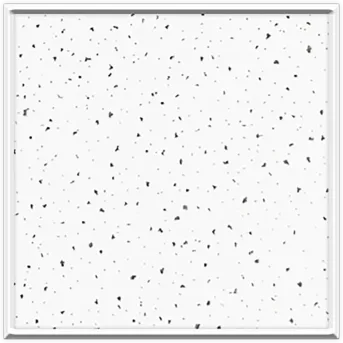10 月 . 20, 2024 02:54 Back to list
drywall ceiling grid
Understanding Drywall Ceiling Grid Systems
When it comes to designing and constructing interior spaces, the ceiling is one of the most vital elements that can affect not only aesthetics but also functionality. Among the myriad of ceiling options available, a drywall ceiling grid system stands out for its versatility, ease of installation, and seamless appearance. In this article, we will explore the key components, benefits, and considerations of drywall ceiling grids, helping you decide whether this system is right for your project.
What is a Drywall Ceiling Grid?
A drywall ceiling grid consists of a framework made from metal or wood that supports drywall panels on the ceiling. Unlike traditional suspended ceilings, which utilize tiles, drywall provides a smooth, solid surface that can be painted or textured to match the room's design. The grid system serves as the underlying structure that holds the drywall securely in place, allowing for a uniform and polished finish.
Key Components of the Ceiling Grid
The drywall ceiling grid is built upon several essential components
1. Main Runners These are the long metal or wooden strips that run the length of the room. Main runners are typically positioned every four feet and are anchored to the ceiling joists for stability.
2. Cross Tees Supporting the main runners, cross tees create a grid layout within which the drywall panels are mounted. They can be adjusted to accommodate various drywall sizes, allowing for flexibility in design.
3. Mounting Clips or Hangers These clips or brackets connect the grid system to the existing ceiling framework. Secure installation is crucial as it ensures that the drywall panels remain stable and properly aligned.
4. Drywall Panels These are the finished materials applied over the grid. Standard sizes include 4x8, 4x10, or 4x12 feet, depending on the height and scale of the project.
Advantages of Using a Drywall Ceiling Grid
Opting for a drywall ceiling grid offers numerous benefits
drywall ceiling grid

1. Aesthetic Appeal One of the main reasons people choose a drywall ceiling system is its sleek and seamless look. Once installed and finished, the ceiling appears as a solid surface, eliminating the visibility of seams or grid lines typical of traditional suspended ceilings.
2. Design Versatility The flexibility of drywall allows for a variety of surface treatments. Whether you prefer a smooth finish, a knockdown texture, or intricate designs, drywall can accommodate your vision.
3. Accessibility Unlike other ceiling types, drywall ceilings can incorporate access panels, providing easy access to plumbing, electrical, or HVAC systems without compromising aesthetics.
4. Thermal and Acoustic Properties Drywall can enhance a room's insulating properties, which aids in temperature control. Properly installed drywall ceilings can also improve sound attenuation, making them ideal for spaces where noise control is a priority.
5. Fire Resistance Many drywall products possess fire-resistant qualities, making them a safer choice for residential and commercial buildings.
Considerations Before Installation
Before diving into a drywall ceiling grid installation, several factors should be taken into account
1. Installation Skill Level While some homeowners may feel confident tackling DIY projects, installing a drywall ceiling grid can be challenging without prior experience. Enlisting professional help may ensure a better outcome, particularly for large or complex spaces.
2. Weight Considerations Understanding the weight of the drywall and any additional materials (like lighting fixtures) is crucial. Adequate support and anchoring are vital to maintaining the integrity of the ceiling.
3. Room Height If the room has low ceilings, a drywall grid may reduce space even further. It’s essential to consider the room’s height when designing the ceiling layout.
4. Budget While drywall ceilings can be relatively cost-effective, the overall price will depend on materials and labor. A detailed budget plan is advisable.
In conclusion, a drywall ceiling grid system can significantly enhance a space's aesthetic and functional qualities. Its seamless finish, design flexibility, and thermal properties make it an appealing choice for both residential and commercial applications. Understanding how to navigate the installation process, alongside its benefits and considerations, will enable you to make an informed decision for your next ceiling project.
-
Revolutionizing Interior Design with Ceilings t grid Suspended SystemNewsOct.29,2024
-
Revolutionizing Ceiling Design with ceiling access panel with Gypsum Tile WaterproofNewsOct.29,2024
-
Revolutionizing Interior Design with PVC Gypsum Ceiling: A Comprehensive GuideNewsOct.29,2024
-
Elevating Interior Design with High quality Mineral Fiber Ceiling TilesNewsOct.29,2024
-
Revolutionizing Interior Design with PVC Gypsum Ceiling: A Comprehensive GuideNewsOct.29,2024
-
Elevating Interior Design with High-Quality Mineral Fiber Ceiling Tiles: A Comprehensive GuideNewsOct.29,2024







